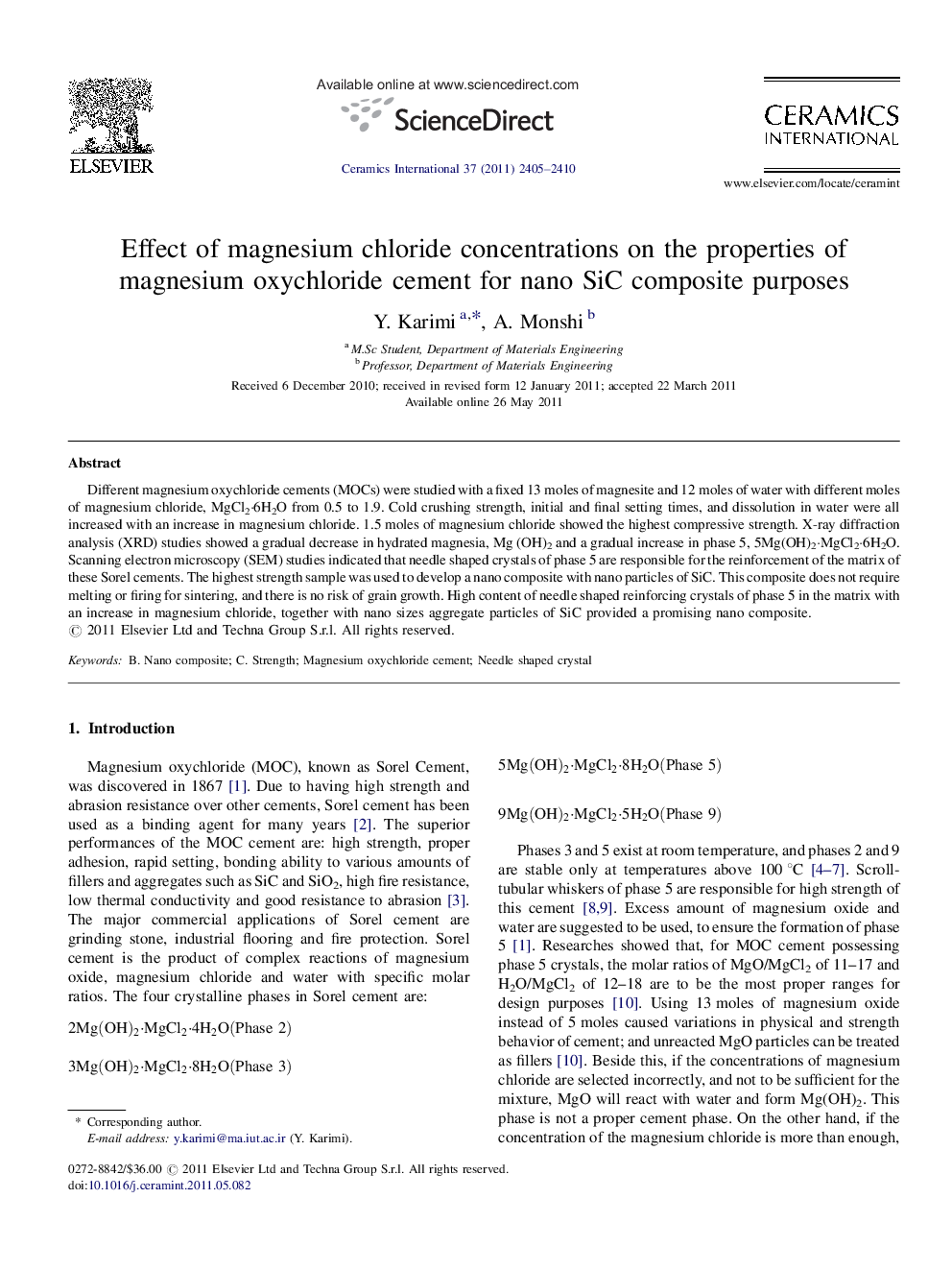| Article ID | Journal | Published Year | Pages | File Type |
|---|---|---|---|---|
| 1463220 | Ceramics International | 2011 | 6 Pages |
Different magnesium oxychloride cements (MOCs) were studied with a fixed 13 moles of magnesite and 12 moles of water with different moles of magnesium chloride, MgCl2·6H2O from 0.5 to 1.9. Cold crushing strength, initial and final setting times, and dissolution in water were all increased with an increase in magnesium chloride. 1.5 moles of magnesium chloride showed the highest compressive strength. X-ray diffraction analysis (XRD) studies showed a gradual decrease in hydrated magnesia, Mg (OH)2 and a gradual increase in phase 5, 5Mg(OH)2·MgCl2·6H2O. Scanning electron microscopy (SEM) studies indicated that needle shaped crystals of phase 5 are responsible for the reinforcement of the matrix of these Sorel cements. The highest strength sample was used to develop a nano composite with nano particles of SiC. This composite does not require melting or firing for sintering, and there is no risk of grain growth. High content of needle shaped reinforcing crystals of phase 5 in the matrix with an increase in magnesium chloride, together with nano sizes aggregate particles of SiC provided a promising nano composite.
